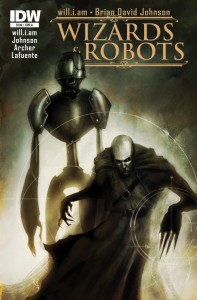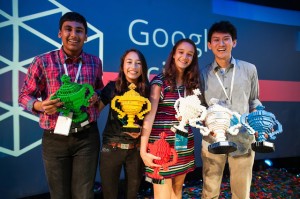Ireland’s CRANN (Centre for Research on Adaptive Nanostructures and Nanodevices) located in Trinity College Dublin seems to be hosting both the AMBER (Advanced Materials and BioEngineering Research) Centre and the NanoWOW education initiative. A Nov. 12, 2013 news item on Nanowerk describes NanoWOW and AMBER in more detail,
Ireland’s new materials science research centre has announced the launch of their new NanoWOW lesson plans. Designed for 5th and 6th class pupils the plans will introduce Irish Primary students to the world of nanoscience, nanotechnology and materials science.
…
Linked to the existing Primary science and maths syllabus while also including environment, history and art, the new lessons will enable school children to understand how the properties of materials can change on the nanoscale and provide opportunities for them to work like scientists through discussion, investigations and activities.
The Nov. 12, 2013 AMBER/CRANN news release, which originated the news item, gives more details about how NanoWOW is being launched during Ireland’s Science Week,
To celebrate the launch of NanoWOW, St Patrick’s College, Drumcondra are using this year’s Science Week theme, “Exploring the XTRA-Ordinary” to find out more about nanoscience and materials science amongst their students and staff. They have organised a number of CPD workshops to introduce primary school teachers to the NanoWOW lessons and will have guest speakers from AMBER visiting during the week.
Dr Cliona Murphy, Lecturer in Science Education, St Patrick’s College said “I think this is a wonderful initiative and we are very pleased to collaborate with AMBER on further developing the educational resources and bringing them to primary schools throughout Ireland. The NanoWow investigations provide children with ample opportunities to work like scientists and to develop their scientific skills and knowledge. Through engaging with the NanoWow activities the children are also provided with numerous opportunities to develop their language and thinking skills and to use a range of mathematical skills. The NanoWow educational programme provides children with first hand experience of the ground breaking scientific research that is currently being conducted in Ireland and gives them an insight into careers that are potentially achievable for them.”
Prof. Stefano Sanvito, AMBER said, “The new NanoWOW lesson plans are designed to engage school children in a creative way that fosters their curiosity in nanoscience. We also want to develop their interest and understanding so they are aware of nanoscience as part of their everyday lives and the potential future career options that would be open to them.”
Prof. Sanvito went on to comment, “Ireland is currently ranked 6th worldwide for nanoscience research and 1st in the EU for European Research Council starting grants. With Nanoscience linked to €15 billion or 10% of Irish exports and 250,000 jobs in sectors like technology, biomedicine, pharmaceuticals, energy and more, the importance of making nanoscience relevant amongst school pupils is obvious for future development”.
The launch of the new NanoWOW lesson plans builds on the success of the “Nano in My Life” lesson plans for secondary schools which were launched by CRANN during Science Week 2011. Targeted at Transition Year students, the resource provides teachers with nanaoscience lesson plans free of charge. With nanonscience due to feature as part of the new Leaving Certificate, the NanoWOW lesson plans aim to build on this success and bring the subject to a wider audience.
Ireland’s Science Week is being held from Nov. 10 – 17, 2013, according to the 2013 Science Week theme webpage (on Ireland’s Science Week website),
Science Week 2013 – Exploring the XTRA-Ordinary
Every day we encounter XTRA-Ordinary processes that are behind the ordinary! From the water that comes out of our taps, to the grass that grows in our fields, to our body’s ability to heal itself and play sports – there are XTRA-Ordinary processes happening all around us. Science Week 2013 is calling on you to come and explore the XTRA-Ordinary too!
The objective of Science Week each year is to promote the relevance of science, technology, engineering and maths (STEM) in our everyday lives and to demonstrate their importance to the future of Irish society and to the economy.
This year we want to show everyone in Ireland that there are scientific processes behind everything around us, most of which are taken for granted every day. Exploring the XTRA-Ordinary invites you to stop, take note and explore the processes that are happening around you every day.
Co-ordinated by Science Foundation Ireland, Science Week 2013 runs from 10 to 17 November 2013 and is a collaboration of events run by colleges, schools, libraries, teachers, community groups, researchers and students throughout Ireland.
For anyone wanting to know more about the NanoWow initiative and the lessons on offer, go here. As for AMBER, that was launched in October 2013 according to an Oct. 24, 2013 CRANN news release,
Minister Bruton launches new €58 Million SFI Research Centre- AMBER
Advanced Materials and BioEngineering Research (AMBER) Centre positions Ireland as a global leader in the areas of materials and medical device development for industry.
More than 45% of multinational jobs wins are connected to SFI research.
Directly supporting 99 highly skilled jobs.
Investment of €23 million from 18 industry partners across diverse sectors.
Industry partners include Intel, DePuy, Medtronic, Merck Millipore and SAB Miller.
Research programme will translate science into new discoveries and devices for a range of sectors such as the development of the next generation computer chips and new medical implants and pharmaceuticals that will improve patirnt care.The Minister for Jobs, Enterprise and Innovation, Richard Bruton TD, together with the Minister for Research & Innovation, Sean Sherlock TD, today (Thursday) launched the Advanced Materials and Bio-Engineering Research Centre (AMBER).
The Centre is funded by the Department of Jobs, Enterprise and Innovation through Science Foundation Ireland (SFI) in the amount of €35million. This funding is leveraged with an additional €23million from 18 industry partners.
AMBER will work to translate science into new discoveries and devices for a range of sectors, particularly ICT, medical devices and industrial technologies.
It’s very exciting to see what they’re doing in Ireland. And, until now, I’d completely forgotten about Canada’s annual Science and Technology week. This year’s was held from Oct. 18, – 27, 2013. While this celebration seems to have been winding down for a number of years,, perhaps 2013 marks a revitalized event,
Thousands of Canadians across the country joined together on Friday, October 18th [2013] to establish a World Record for the largest science lesson. [emphasis mine] Thank you to all of the organizers and all of the participants who made this inspiring event possible.
Over the next few weeks we’ll be collecting all the required evidence and forwarding it to Guinness for the final number to be calculated and an announcement to be made. As soon as the process is finished we will announce the results on Science.gc.ca.
Of course, Guinness World Records traces its roots back to Ireland, From the History webpage of the Guinness World Records website,
10 November 1951
Sir Hugh Beaver, Chairman of the Guinness Brewery, is out hunting game birds by the River Slaney in County Wexford, Ireland, when he misses a shot at a golden plover. Sir Hugh wonders if the plover is the fastest game bird in Europe but can’t find a reference book that answers the question.
I’m sure the Irish could rival Canadians for the size of the science lessons they might wish to hold. Perhaps Canadians should offer a friendly challenge?


![[downloaded from http://www.monkeytalesgames.com/demo.php]](http://www.frogheart.ca/wp-content/uploads/2013/07/MonkeyTales-300x225.jpg)